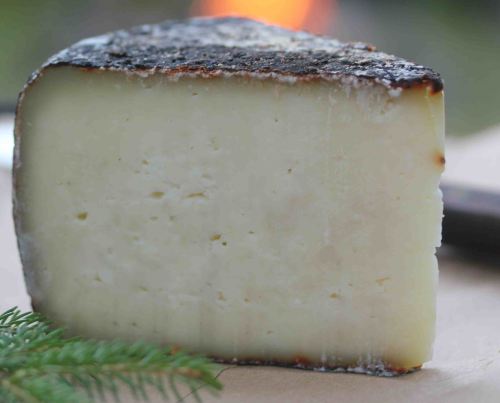Castelvetrano Olives with Chicken Thighs and Almonds
By Chef Lippe

20 garlic cloves peeled
½ cup extra virgin olive oil
8 large chicken thighs, bone in and skin on
salt and black pepper to taste
olive oil as needed
1 yellow onion cut into medium dice
1 orange, cut in wedges
2 medium-size rosemary sprigs
3 cups chicken broth
1 large bunch swiss chard, rinsed and coarsely chopped
1 cup Castelvetrano olives, pits removed and halved*
½ cup almonds, toasted and chopped coarsely
1 tablespoon butter
Place garlic cloves in a small saucepan along with the extra virgin olive oil. Cook over low heat until soft, stirring occasionally, about 15-20 minutes. Remove cloves and set aside, reserve the oil.
Preheat oven to 375ºF. Season chicken thighs with salt and pepper. Place skillet large enough to hold all 8 thighs over medium heat; add 1 tablespoon olive oil. Place chicken thighs in skillet, skin side down and cook over medium until skin is golden brown, about 5-6 minutes. Turn thighs and cook for another 2 minutes. Reserve oil and chicken drippings in the skillet as you move the thighs to a deep baking dish large enough to hold them in a singled layer; set aside.
Add onion, orange and rosemary to the now empty skillet. Brown gently over medium-low heat, using a wooden spoon to scrape up and incorporate the browned bits from the bottom of the pan. Cook until onions are golden brown, about 12-15 minutes. Add chicken broth and bring to a simmer. Pour over chicken thighs and place in oven. Braise until juices run clear and chicken is done, about 40 minutes.
Meanwhile, pour reserved garlicky olive oil into the skillet. Turn heat to medium. Add swiss chard with salt and pepper to taste. Cook, stirring occasionally, until chard is tender- about 2-3 minutes.
Place chard on a warm serving platter. Remove thighs from braising liquid and place on the chard. Lightly tent with foil to keep warm. Remove rosemary and lemon wedges from braising liquid, and discard. Pour braising liquid into a sauce pot over high heat. Bring to a boil and cook until 1½ cups remain. Add the reserved garlic cloves, olives and almonds. Season with salt and pepper. Whisk in the butter, then spoon the sauce over the chicken. Serve hot.
*To pit whole olives, place them in a heavy plastic bag. Use a heavy skillet to gently crush the olives, which makes it easier to pit them.












